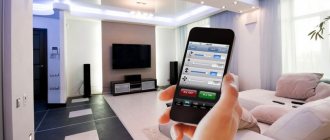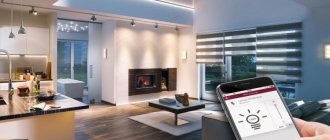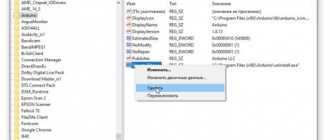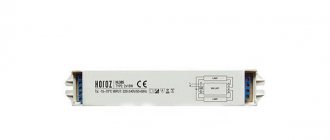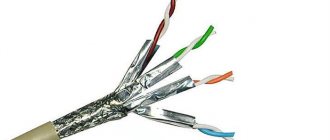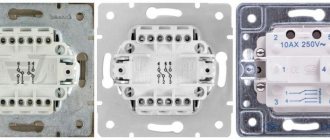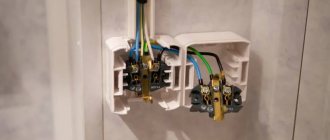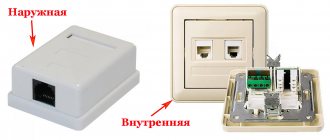The popularity of “Smart home” is growing every day. The development of mobile and computer technologies, the availability of accessible wireless networks - all this makes it possible to control the smart home system from a distance. To do this, you need to be connected to the World Wide Web and have remote access via a smartphone or computer. This type of smart home management is especially relevant for property owners who always want to be aware of events.
The process of connecting the smart home system
Remote control via the Internet provides the ability to:
- make sure that household appliances have been turned off;
- find out about uninvited guests visiting the territory, about gas leaks;
- monitor the proper operation of heating and water supply systems;
- open and close curtains, blinds, windows;
- prepare for returning home, for example, turn on the air conditioners or coffee machine.
The control center is configured through special equipment that connects the owner’s gadget to special sensors and modules of household appliances. The software product is synchronized with the “control master”, thereby obtaining the rights to remotely change the parameters of the smart home.
An intelligent building is connected to a control unit at a distance not only when using algorithms that were developed by programmers. It is also possible to combine all devices in one cloud storage. Through it, direct remote control of gates and other household components occurs.
Assembly
You can download the model for a 3D printer from Thingiverse. Print all parts using PLA plastic, except for the holder for the ESP-32 Cam. The microcontroller itself heats up during operation, and if you shine the LED for a long time, it gets hot enough to deform the PLA. Therefore, print the microcontroller holder with ABS plastic or other heat-resistant plastic. The temperature of the microcontroller when the backlight is on can be somewhere up to 80 degrees C. Filling 20%, resolution 0.2.
Ideally, the wheels and tracks of the track should also be printed with ABS or other wear-resistant plastic. But I printed it on PLA. I don't see any signs of wear yet.
During assembly, you will have to press the nuts into the bearings into the seats. Be careful not to break parts. Make sure that the seats are free of plastic and other debris. Do not use a rough tool for pressing; hand strength is usually sufficient.
The longest and most tedious job is assembling the caterpillar. Each track requires 34 tracks. They are connected to each other using a filament thread with a diameter of 1.75 mm. Before joining, clean out the holes in the tracks with an awl or drill, and then cut the filament at an angle to create a sharp end. Carefully insert it into the holes, connecting the tracks, and trim off the excess. Make sure the track links move freely.
The track will be tight at first, but over time it will stretch out a bit. You can lubricate the moving parts with silicone grease.
The video at the beginning of the review shows in detail how to assemble an all-terrain vehicle from printed parts.
If it is not possible to print on a 3D printer, then assemble a chassis from scrap materials. It’s not even necessary to make tracks; it will run fine on regular wheels.
Programming the smart home system
A smart home control system via the World Wide Web involves the use of a client application. To create it, you will need to think through all the schemes and features of the functioning of engineering subsystems. After this, programmers begin to develop a software product. As a result, the client - the owner of an apartment or house - receives a utility for remote control of air conditioning, electrical appliances, and lights. The owner of the program will be able to set or change the operating parameters of certain elements with just one click.
There is also an alternative method of monitoring equipment in a smart home - GSM control. This system is characterized by reliability, because its operation requires the use of SIM card slots in the smart room equipment. Such devices are subsequently controlled by commands via digital code in messages received from the mobile phone.
Accessories
Electronics
- microcontroller ESP-32 Cam;
- motor driver L298N;
- DC motors with gearbox - 2 pcs;
- servomotor SG-90;
- 18650 batteries;
- compartment for one 18650 battery - 2 pcs;
- switch;
- dupont wires;
The electronics cost me about $25.
Other little things
- bolts M3 x 5 - 21 pcs.
- bolts M3 x 10 - 4 pcs.
- bolts M3 x 18 - 4 pcs.
- bolts M3 x 25 - 4 pcs.
- M3 nuts - 33 pcs.
- bolts M5 x 30 - 6 pcs.
- nuts M5 x 12 pcs.
- bearings 625-2RS (5x16x5mm) - 6 pcs.
Why do you need to control your heating system remotely?
Today there is a great opportunity to automate the heating system. This will allow you to manage and control autonomous heating, which will relieve property owners from worries and unnecessary hassle associated with setting the optimal temperature regime and excessive heat consumption. Smart home control via the Internet allows you to connect thermostats to the system. You can make changes, for example, set a comfortable temperature for the return of family members, or turn off the regulators while you are away, using your mobile phone, which is regularly at hand.
Benefits of using remote heating control systems
The advantages of an intelligent home, especially heating control via the Internet, include:
- creation of additional comfortable conditions for stay and living in the premises;
- savings on heating bills. The thermostat in a smart home can be set to economy mode when there are no residents;
- reducing the round-the-clock load on devices, which increases their service life;
- Autonomous heating diagnostics can be launched at any time;
- the ability to set different temperature conditions for each room;
- reducing the overall cost of maintaining the entire house or apartment.
Rating: Manufacturers and models of GSM modules
A mobile phone can be used as a remote control in a remote access system. To do this, just insert the SIM card into your mobile phone and connect it to the boiler.
Each device contains instructions for use, as well as instructions for installing the module
To purchase such a module yourself, it is recommended to pay attention to the rating. It presents a selection of models for home use from various manufacturers. In addition to them, devices from the companies Wolf, Baxi, Buderus, Navien, Protherm, Vaillant are considered good products.
"Kotel OK"
The most popular on the market, one of the best and most inexpensive GSM modules for heating boilers made in Russia. In addition to the price, it is distinguished by its compact size, extremely simple and easy setup, and the presence of an application that can send commands, including in the form of SMS, which is an excellent option that allows you not to use tariffs with Internet access.
The functionality of the device is quite simple, the minimum required: temperature control, setting alerts, checking boiler operating parameters, and the module also has a built-in relay that allows you to turn the boiler on and off.
Among the disadvantages, it is worth noting a rather simple application with the minimum required functionality and an outdated interface, the presence of an external temperature sensor with a cable length of only 0.5 meters, which does not imply its installation in other rooms remote from the boiler room. The antenna is also not remote, screwed into the device via a threaded connection.
Cost: 3,990 rub.
XITAL GSM 4T
Another well-known, more professional and versatile device with a much richer package. The heating control functionality in it is approximately the same as in the previous “Boiler OK” - the minimum required, however, there are as many as 4 zones for additional devices (flow sensor, smoke sensor, motion sensor, flood sensor, door opening sensor, etc.). Also included is an electronic key and a reader (similar to those installed in intercoms), so you can influence the settings, if desired, only with an electronic key.
The main difference is the presence in the kit of two remote temperature sensors with a wire length of 10 m, as well as a remote wired antenna and a cord for connecting a backup external battery (unfortunately, there is no built-in one). Management and control can be carried out both via SMS and through the application.
The disadvantages, in addition to the lack of a built-in battery, are the ineffective and inconvenient, although understandable, application interface, less attractive appearance with exposed terminals and large dimensions. Please note that for heating you must choose a model that has a “T” at the end.
Cost: 8,640 rub.
EVAN GSM CLIMATE
Also known as ZONT H-1, it features a more modern and convenient application, with ready-made “Economy” and “Comfort” modes, as well as the ability to program boiler operating parameters. It is enough to configure the boiler operating pattern once and the module will automatically issue commands to the boiler to change parameters depending on the time or day of the week. Control via a web interface is also available. The standard package includes one remote temperature sensor and a remote antenna.
Perhaps the only drawbacks are the lack of a built-in battery and only one contact for connecting an external temperature sensor.
Cost: 6,780-8,840 rub.
ZONT H-1V
A more advanced analogue of the previous GSM CLIMATE (ZONT H-1). Despite its less attractive appearance, it has an additional “Anti-Freeze” mode and a built-in battery for autonomous operation during power outages. Number of connected temperature sensors – up to 10 pcs.
Otherwise, due to the same firmware, everything is similar to the previous model: the same control via SMS, application or web interface, which, by the way, is one of the most convenient and functional, with statistics. The kit still includes one remote temperature sensor and a remote wired antenna.
Cost: 7,400-9,200 rubles.
Principles of equipment control via the Internet
Until recently, all control of a smart home took place through special panels that were placed on the walls of the room. After this, companies began to produce a remote control that has all the access to change intelligent parameters.
Innovative systems have a touch screen and also allow you to connect a smartphone, tablet or computer to control household appliances or other comfort elements. Managing windows and other devices involves two aspects: diagnostics and direct change of previously set parameters.
The functional features of monitoring allow you to obtain comprehensive information about the condition of the building at any time. The owner of an apartment or house can check the security system (whether windows and doors are locked, whether electrical appliances are turned off), turn off lights and electronic household equipment, find out the temperature in the entire room or in individual zones, and view images from cameras. Such data is stored in history, so the owner can at any time compare the indicators for previous periods with today’s.
Modern smart home control capabilities have no limitations. Any owner of the system with access can open the garage door, start, turn off heating, lighting and electronic devices. Equipment manufacturers are increasingly equipping their products with “smart” technologies, so the possibilities will only increase.
Specifications
Sonoff Wi-Fi relay has the following characteristics.
| Parameter | Meaning |
| Max current | 10 A |
| Supply voltage | 90–250 V |
| Wi-Fi protocol | 802.11 b/g/n |
| Operating temperatures | 0°C to 40°C |
| Weight | 0.05 kg |
| Dimensions | 88×38×23 mm |
The base of this relay is the Chinese microcontroller ESP8266.
Is it possible to control the relay from several phones?
Can! In this case, the eWeLink application must be installed on each phone.
There are two options here. The first option is to log into the eWeLink application with the same name and password from different phones and control the relay.
The truth is, if you log into the application on one phone, and then at the same time log into the application using the same username and password, but on another phone, then an error will occur on the first phone and the application will automatically exit. In this case, the second phone remains in the application and can be used to control devices.
The second option is to delegate control of the relay to another user who is registered under a different account. Access to relay control can be given to another user by clicking on the “Share device” button.
At the same time, I would like to note that when controlling a relay from one phone, its status is displayed almost instantly on all phones that are connected to it.
